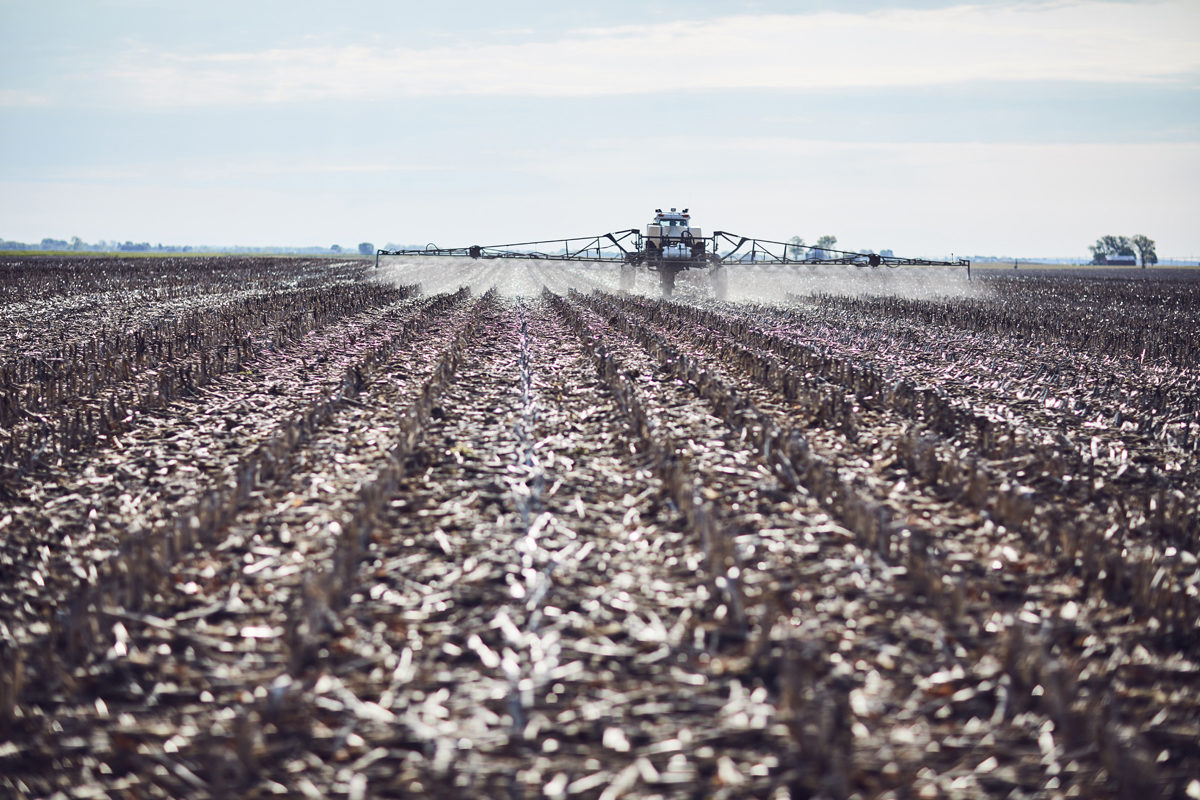The Difference Sulfur Makes in Soybeans

Sulfur plays many important roles in soybean plants, from helping with nitrogen uptake to formation of essential amino acids. It is important that we understand the how to manage sulfur for high soybean yields.
Sulfur deficiencies, which are showing up more often in fields, are caused by several factors, including:
- Reduced industrial emissions, with current rates around 5lbs/ac.
- Higher crop yields, which remove more sulfur from the fields. It is estimated that 70-bushel soybeans remove 13 pounds of sulfur.
- Increased use of fertilizers without sulfur instead of manure containing sulfur.
- Sulfur leaching out of the root zone at higher rates due to excessive rainfall or irrigation.
The importance of managing sulfur is a priority for many producers as it can not only impact soybean production but also effect feed quality. We understand that sulfur is incorporated into soybean protein in amino acids cysteine and methionine. Animals cannot synthesize either of these, so they must get them from dietary sources. In fact, sulfur-containing amino acids (SAAs) are often the limiting factor when using soybean meal as animal feed.
Understanding Sulfur Mobility
Sulfur is full of contradictions. It is one of the most mobile and variable nutrients when in the soil — which makes soil testing for sulfur problematic — but has low mobility once incorporated into plants. In addition, sulfur can interact with other nutrients that are applied at the same time, such as nitrogen, phosphorus, potassium and manganese.
Depending on temperature and moisture levels, approximately 95% of the sulfur in soil is in the form of organic matter, which is broken down (mineralized) to sulfate-sulfur (SO4-S) over many years. It is the SO4-S that is absorbed by plant roots. Once in the plant, sulfur is not easily transported.
Most sulfur is transported through the plant as a hitchhiker. When plants suffer from a lack of nitrogen, they deconstruct older leaves and tissues and transport the nitrogen-containing compounds to new growth areas or for use in seed production. Since some of these compounds also contain sulfur, the sulfur is transported to seeds as well. However, if plants have sufficient nitrogen, they do not transport the nitrogen-containing compounds, so the seeds may end up deficient in sulfur and thus deficient in sulfur-containing amino acids.
So, what does the research say?
While recent research has started untangling some of the other dependencies of sulfur needs, the results have not been consistent.
Higher yields
- In Maryland, foliar spray on flowering soybeans resulted in improved protein quality (double the percentage of methionine and cysteine), as well as a 5%-10% increase in yield, when treated with gypsum (calcium sulfate) or Epsom salts (magnesium sulfate). They are also experimenting with different methods of application, such as dry powder or a spray rig.
- In Indiana, ammonium sulfate and pelletized gypsum both significantly increased yields, regardless of the growth stage at which they were applied. Their conclusion was that reference strips of soluble sulfur should be applied as close to planting as possible.
Higher protein levels
- In 2018, trials in Tennessee with different levels, methods and timing of sulfur application showed that only sulfur applied late in the growing season resulted in higher protein levels.
So, what do researchers do when there are many studies, but the results disagree? They look at the big picture and conduct a meta-analysis of the results of all the relevant studies. Two such analyses have recently been completed by researchers leveraging checkoff dollars.
Led by Ignacio Ciampitti, Ph.D., of Kansas State University, the first study group looked at a total of 44 unique site years over eight states and three growing seasons.
Their analysis found that applying sulfur:
- At planting increases seed protein concentration.
- Application at any time can increase SAA concentration, but only if the field already had intermediate levels of sulfur and organic matter.
However, the gains were all highly variable and site specific, indicating there may be other variables at work.
In the second study, Anna M. Locke, Ph.D., and her team at the USDA office at North Carolina State University used data from 76 peer-reviewed journal articles to examine the effects of irrigation, nitrogen application, plant density, row spacing, sulfur application and tillage on soybean yield, protein and oil concentration and protein yield.
Locke found “the largest increase in seed protein resulted from sulfur application.” In fact, applying sulfur fertilizer increased protein and oil concentrations as well as yield. However, rainfall was high in many of the studies, which possibly washed away existing sulfur, making the added sulfur more valuable.
Sulfur applications show promise, but there is more we need to understand to produce more higher-quality soybeans. Your checkoff is dedicated to continued research to make sure we thoroughly understand the positives and negatives of different sulfur fertilizer applications.



